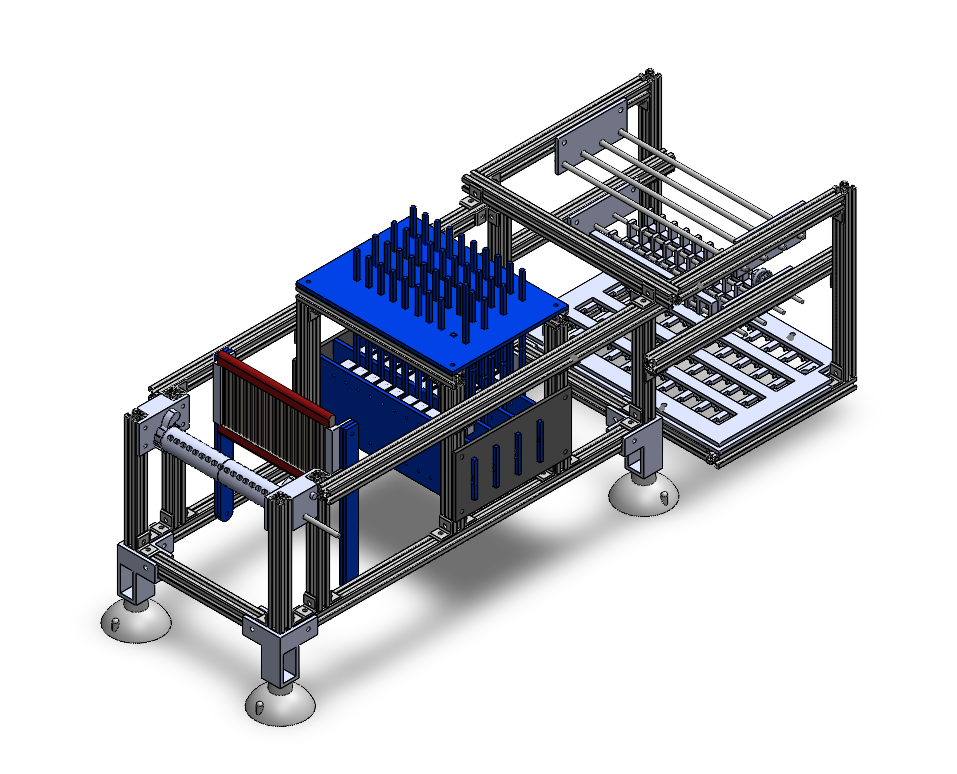How can a loom, a device used to weave cloth and tapestry, enhance computational thinking and broaden participation in computer science in higher education? This question is at the center of a three-year collaboration between researchers from UCI and Carnegie Mellon University through a $1.5M grant from the National Science Foundation (NSF). The project, “Recrafting Computer Science: Fiber Crafting as Computational Thinking,” started in 2021 and is now launching computer science courses at CMU for fall 2022 and at UCI for spring 2023. The newly designed undergraduate computer science curriculum involves constructing and programming a robotic loom, offering a more tangible approach to computational thinking.
“Harking back to the first computers and the history of the Jacquard loom, where people would actually compute what that loom would do … we’ve been looking at new designs to do the complex engineering and CS tasks that a Jacquard loom does within an undergraduate course,” says Informatics Professor Kylie Peppler of UCI’s Donald Bren School of Information and Computer Sciences (ICS). Peppler is leading the project along with Professors Melisa Orta Martinez and Carolyn Rosé of CMU.
“Much of computer science gets abstracted onto the screen,” says Peppler, “so what if we bring it out into our physical reality, so the equations that you make get turned into the cloth that you’re producing?”
Leveraging Cloth for Computation
Emphasizing physical connections is particularly timely given the loss of in-person learning during the COVID-19 pandemic. “There is that thirst of needing to come back and have something physical,” says Peppler, “because so much of our world is now digital.”
The idea for the new computer science curriculum was informed by prior NSF work on recrafting mathematics education. “We had noticed that textiles — and weaving in particular — were innately mathematical,” says Peppler.
In turning the focus from mathematics to computer science education, the goal was to show similarities between the seemingly unrelated fields of robotics and textiles, highlighting their common foundation in mathematics and computational thinking. An open-source software-enabled robotic loom kit, called Robo-Loom, aims to bridge the divide by offering hands-on computer science instruction with potential applications in a variety of areas, such as artificial intelligence and fashion.

ICS Postdoctoral Scholar Joey Huang, who has been helping the team, recently received an NSF Postdoctoral Supplement Award of $250,000. This highly competitive award allows her to work on the grant full time, leading the team in developing course materials and fine-tuning the Robo-Loom prototype. This summer, she spent time in Pittsburgh, helping CMU faculty prepare for the upcoming “ReCrafting Soft Technologies” course.

“We’re trying to create a curriculum that covers metrics math, mechatronics, computational thinking, and also weaving,” says Huang, whose background is in educational psychology and computing. “So the weaving on the loom is actually computational art. When students do the matrices, they will be able to see the zero-one, zero-one patterns.” Their creations could be decorative or practical; Huang is considering having students weave together a leash for a pet, for example.
Throughout the winter, the team will improve upon the course design, based on lessons learned at CMU. Peppler will then teach the course at UCI in the spring (ICS 80: Special Topics in Information and Computer Science) and will aim to teach it again in coming years.
Increasing Collaboration and Diversity in STEM
As outlined in the grant abstract, the project aims to pave the way for “creating a technical workforce that is able to function effectively in highly collaborative, diverse environments.”
Peppler and Huang, both affiliated with UCI’s Connected Learning Lab, are leveraging their expertise in embodied learning and its effects on broadening participation in STEM, while also exploring the relationship between computational thinking and collaboration. “Computational thinking is not just for individual students. It actually can be seen and can grow through collaboration,” explains Huang. “Math becomes the language that bridges two disciplines together, so people from the weaving side and people from the computational side can actually talk with each other.”
The researchers also suspect that broadening the view of what constitutes computational thinking —beyond the narrow idea of it being an activity that only occurs with computers — can encourage more women and people of color to explore computer science.
“People think computer science is just coding all the time … but you can actually design amazing crafts and create something that’s very beautiful through creative coding,” says Huang. “I feel that’s critical to show students, especially as most of them are still exploring their identity.” The course will incorporate lessons in art and history, as well as explore entrepreneurial aspects of the work, such as electronic textiles.
“Textiles relate to every culture, so seeing the computational complexity and learning some textile art history can open up what it means to do computing and redefine who is a computer scientist,” says Peppler. In particular, offering this course at UCI, which is a top choice for first-generation students and is both a Hispanic-serving and Asian American and Native American Pacific Islander-serving institution, could have a far-reaching impact when it comes to diversifying STEM. “NSF was very, very interested in reaching the UCI undergraduate population,” stresses Peppler. “This course presents a different way to start your experience in STEM.”
— Shani Murray
